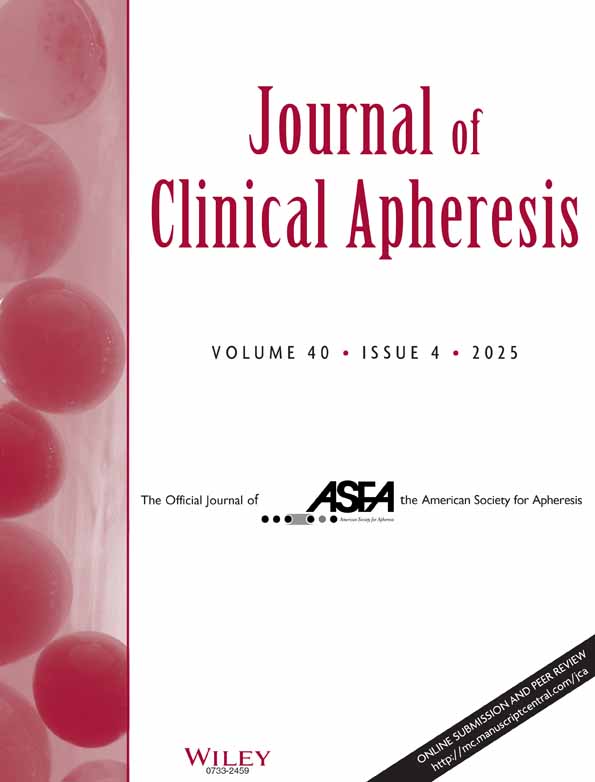A randomized comparison of plateletpheresis with the same donors using four blood separators at a single blood center†
This work was carried out at the DeGowin Blood Center, University of Iowa Hospitals and Clinics, Iowa City, IA 52242.
Abstract
At one blood center, each of 20 donors underwent plateletpheresis on four blood cell separators in random order. We compared the CS3000+, Amicus V 2.41, MCS Plus, and Spectra LRS V 7 Turbo regarding platelet (PLT) yield, pre- and post-procedure PLT counts, percent fall in donor PLT count, process time, efficiency, PLT product and donor PLT volume (MPV). Using ≥ 150 × 109 PLTs/L pre-donation counts, a goal was set of 4.5 × 1011 PLTs unit in up to 100 minutes processing time. Results were (mean values) PLT yields of Amicus, Spectra, CS3000+, and MCS Plus: 4.3, 4.6, 4.3, 4.0 × 1011 PLTS, respectively; percent donor PLT fall: 24, 32, 30, 29%, respectively; processing times: 50, 74, 87, 101 minutes, respectively; relative efficiency (RE): 2.2, 1.6, 1.2,1.0, respectively (based on the MCS Plus performance with RE of 1 = 4 × 109 PLTS/min); PLT product MPV: 6.7, 7.4, 6.8,7.1 fL, respectively; pre-procedure donor MPV: 7.7, 7.3, 7.6 and 7.6 fL, respectively; and percent donor MPV change: −5.2, 0, −6.6, and −10%, respectively. Significant changes in the donor MPV were noted (P < 0.05) but could not be related to product MPV. Spectra seemed to collect larger PLTs (higher MPV); the significance remains unknown for both donors and recipients. Importantly, all four separators gave acceptable and comparable PLT yields (P < 0.05) with Spectra trending higher. The short process time and high RE together indicate highly efficient collections particularly by Amicus and Spectra. J. Clin. Apheresis 17:170–176, 2002. © 2002 Wiley-Liss, Inc.




